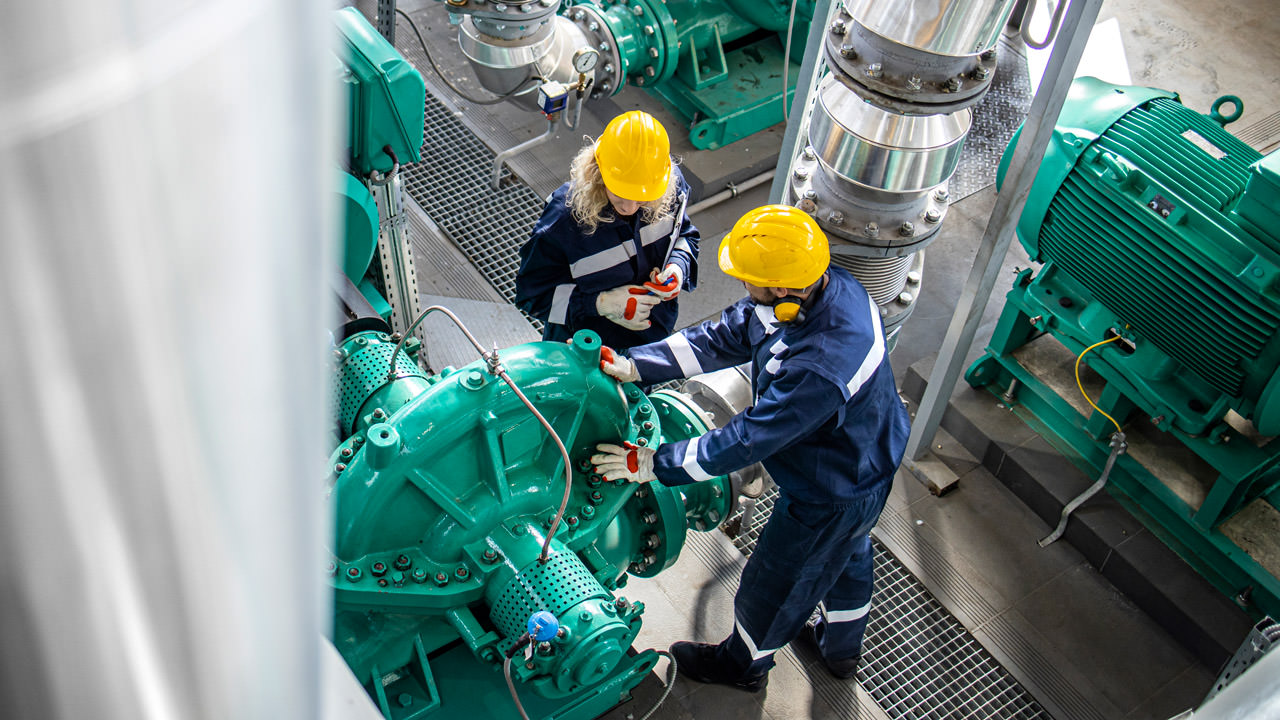TechnologyMay 20, 2024
Ethernet-APL digitization impacting process industries

Ethernet Advanced Physical Layer is bringing digitization into every corner of process control plants. Long cable lengths, explosion protection and interoperability is enabling continuous and transparent communication across all hierarchy levels, and is paving the way for demanding IoT applications in the process industry.
Ethernet Advanced Physical Layer (APL) is a ruggedized, two-wire, loop-powered Ethernet physical layer that uses 10BASE-T1L plus extensions for installation within the demanding operating conditions and hazardous areas of process plants.
Ethernet-APL technology enables a direct connection of field devices to Ethernet-based systems in a way that process industries can benefit from a convergence of their OT and IT systems. Utilizing a switched architecture eliminates any unwanted interference between devices connected to the same network.
Ethernet-APL adopts technologies and options already established in the field of process automation. This includes the proven trunk-and-spur topology shown in the figure above with the ability to power up to 50 field devices with up to 500 mW each. Widely used and established cable infrastructures are specified to support the migration in brownfield installations to Ethernet-APL.
The basis of the technology is that it offers a series of key benefits:
Only Two Wires: By using two conductor cabling, that may be already be installed in a facility, Ethernet-APL can offer an attractive technology upgrade value proposition.
Conformance: Devices and components are required to undergo conformance testing to assure that all critical Ethernet-APL features are implemented properly.
Familiar Installation: Using proven FISCO practices helps assure proper installation — first time, and every time.
Ethernet-APL technology
Since Ethernet itself is a broadly accepted standard for wired digital communications that is standardized in IEEE 802.3, its wide acceptance in industries and households created an eco-system of standardized tools for installation, troubleshooting, and diagnostics.
According to the FieldComm Group, “Ethernet-APL is an enhanced physical layer for single-pair Ethernet (SPE) based on 10BASET1L. It communicates via a cable length of up to 1000 m at 10 MBit/s, full-duplex, which is more than 300 times faster than current technologies, such as HART or fieldbus. It is the logical extension for Ethernet and provides the attributes required for reliable operation in the field of a process plant. Ethernet-APL is a physical layer that will be able to support EtherNet/IP, HART-IP, OPC-UA, PROFINET, or any other higher-level protocol.”
Additional key benefits of Ethernet with an Advanced Physical Layer (Ethernet-APL) are the ability to enable long cable lengths and explosion protection via intrinsic safety with communication and power over two wires. Based on IEEE and IEC standards, Ethernet-APL supports any Ethernet-based automation protocol and will develop into a single, long-term stable technology for the entire process automation community.

“Technology solutions such as Ethernet-APL (10BASE-T1L) will support hazardous areas via 2-Wire Intrinsically Safe Ethernet (IEC TS 60079-47:2021) and remote, hard to reach locations with support of Type A Fieldbus Cable (IEC 61158-2) with lengths of up to 1,000 meters. ODVA has completed all of the necessary specification work to make EtherNet/IP ready for Ethernet-APL,” — Dr. Al Beydoun, President and Executive Director, ODVA.
Encouraging survey results
Study identifies industry readiness and application targets for Single Pair Ethernet and Ethernet-APL technology.
Dr. Al Beydoun, ODVA President and Executive Director told the Industrial Ethernet Book that ODVA commissioned a study on Single Pair Ethernet (SPE) to understand the level of industry readiness, perceptions, and opportunities for this new technology.
The study was conducted in June 2023 and resulted in close to 250 completed surveys from a broad representation of the market, including system integrators, discrete manufacturing, food/pharmaceutical companies, and utilities.
The leading roles of survey participants were individual contributors/engineers and mid-level managers, meaning that those who would be directly engaging with SPE the most had the strongest voice. The median company in the survey was mid-sized with $10-$100 million dollars in revenue and between 100 and 500 employees. While North America was the predominant respondent location, Europe and Asia made up a third of the total respondents.
The survey results showed that the top applications likely to benefit from SPE are remote, hard to reach locations; highly distributed field devices; simple, low-cost devices; and hazardous areas. Additionally, respondents stated that ability to provide power & communication via same wire pair, increased speed/bandwidth, and simplified cabling were the top three anticipated benefits of SPE.
Furthermore, 42% of respondents were willing to make moderate or significant investments to achieve the benefits of SPE while 87% of respondents were willing to make a minimal investment. Lastly, 44% of respondents believed that their organization will adopt SPE in 4 years or less.
“The results of the SPE survey are very encouraging and show that the opportunity for the technology is now. Another takeaway from the survey is that there are opportunities to further grow and develop the SPE market via creating and widely disseminating tutorials, case studies, cost/benefit analyses, and planning and implementation guides to educate potential users,” Beydoun said.
Technology trends
According to Beydoun, SPE addresses the IIoT technology trend of connecting more devices than ever before via Ethernet, which enables remote parametrization and device monitoring as well as the availability of additional data that can be used for operations visibility and optimization.
“According to the ODVA commissioned survey, the top-rated applications show that there are many different uses for SPE. Technology solutions such as Ethernet-APL (10BASE-T1L) will support hazardous areas via 2-Wire Intrinsically Safe Ethernet (IEC TS 60079-47:2021) and remote, hard to reach locations with support of Type A Fieldbus Cable (IEC 61158-2) with lengths of up to 1,000 meters. ODVA has completed all of the necessary specification work to make EtherNet/IP ready for Ethernet-APL,” Beydoun said.
Additionally, simple, low-cost devices such as contactors and push buttons can be connected via EtherNet/IP In-Cabinet SPE (10BASE-T1S).
EtherNet/IP can be made available in-cabinet via a bus solution that uses a multidrop network and control power cable that spans a single cabinet. EtherNet/IP In-Cabinet uses one interface per device and one switch port across multiple devices to reduce both commissioning and hardware cost. Further, highly distributed field devices will be supported via general purpose SPE. ODVA is currently working on general purpose SPE for EtherNet/IP to support additional discrete applications.
Engineering challenges
SPE allows engineers to better handle complex tasks like device commissioning that can be done significantly quicker via Ethernet as well as troubleshooting that is aided by descriptive diagnostics. Additional bandwidth means that devices that previously only supported one process variable can now support multiple via the 10 Mbit/s speeds of Ethernet-APL, as an example. Ethernet standards such as PA-DIM and OPC UA, which are both supported by EtherNet/IP, also allow standardization of data exchange between the device, edge and cloud level for optimization and analysis powered by Artificial Intelligence.
“The significant challenges that are addressed by SPE across discrete, hybrid, and process industries show why ODVA is such as strong proponent of the technology,” Beydoun added. “ODVA has supported Ethernet-APL and has finalized all the necessary specifications and conformance testing for this technology. With market demand indicating customer desire for EtherNet/IP devices over Ethernet-APL, device vendors will be coming to market with products in response to this need. In addition, ODVA has finalized specifications for the use of EtherNet/IP in-cabinet, and industry can expect conformance testing and solutions to be available soon.”
Markets and anticipated impact
Beydoun said that Ethernet-APL will address the needs of the hybrid and process industries who require hazardous area protection and long cable lengths. The hybrid industries such as food/beverage are likely to lead the way in terms of Ethernet-APL adoption for devices such as level and temperature sensors. In-Cabinet EtherNet/IP looks to be adopted across all industries because the wiring savings compared to a traditional cabinet along with the additional diagnostics are broadly beneficial.
“Process and hybrid industries are probable to be among the first users though due to the prevalence of stainless-steel cabinets for wash down applications and outdoor environments. General purpose Ethernet is targeted toward the discrete industries such as automotive that have already shown a strong interest in digital connections to the sensor level. Distribution centers, airports, and factories that use long fieldbus cable lengths to support proximity sensors and gate actuation are also good candidates for general purpose SPE,” Beydoun said.
“The impact of SPE on manufacturing operations will be very positive due to the additional data, ability to monitor and make changes remotely, and the capability to easily add devices to the network over time. The benefits of SPE will make it possible for controls engineers and plant managers to better handle the challenges of improving quality, output, and profitability in the face of rising costs, increased focused on sustainability, and the shortage of workers,” he added.


